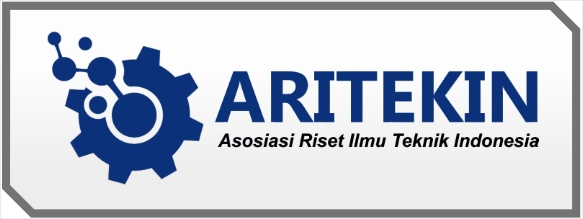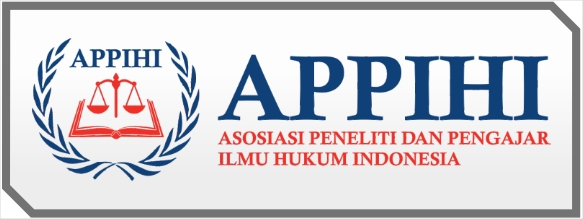Studi Pendekatan 7S Mckinsey Dalam Peningkatan Efektivitas Belanja Modal Pemerintah Kabupaten Semarang
DOI:
https://doi.org/10.55606/sinov.v5i1.602Keywords:
Capital Expenditures, Semarang Regency Budgeting, Economic DevelopmentAbstract
Efficient allocation of resources will contribute to development where development itself will be positively correlated to a country's economic growth, good capital spending can increase economic development in the region and capital spending can also become a potential regional investment and can become a regional investment instrument if managed properly, with high efficiency. However, capital expenditure should also be in accordance with the needs and capabilities of the community, both for their socio-economic and psychological needs. If the allocation of capital expenditures is not effective, it will not be able to encourage an increase in regional production, so it will not be able to accelerate economic development in the regions. This research aims to formulate a strategy to increase the effectiveness of the utilization of local government capital goods in supporting regional economic development. This research approach is a mixed approach and descriptive analysis research type. The analysis utilizes the McKinsey 7S framework and takes a case study from Semarang Regency. It is hoped that a strategy can be developed to increase the effectiveness of the use of capital goods so that it can support encouraging local investment flows and economic development in the district area. Strategy to rise up efficiency, effectivity, and impacts of capital budgeting Planning for procurement of spending capital as needed since the previous year, Carry out an inventory of assets to sort capital expenditures that are still needed from those that are no longer needed; Strengthening leadership so that the team focuses on goals; planning and division of work according to the expertise, experience, and abilities of team members; and periodically reporting and evaluation related to the administration and utilization of capital expenditures.
Downloads
References
Ahmad, A. H., Green, C., & Jiang, F. (2020). Mobile Money, Financial Inclusion and Development: a Review With Reference To African Experience. Journal of Economic Surveys, 34(4), 753–792. https://doi.org/10.1111/joes.12372
Ahmad, P., Yusof, F., & Abdullah, F. (2013). Local Economic Growth and Community Sustainability. Procedia - Social and Behavioral Sciences, 101, 437–444. https://doi.org/10.1016/j.sbspro.2013.07.217
Al-Baidhani, A., & Alsaqqaf, A. (2022). Can Leadership Influence Employees’ Productivity? SSRN Electronic Journal, December. https://doi.org/10.2139/ssrn.4307548
Beck, T., Levine, R., & Loayza, N. (2000). Finance and the sources of growth. Journal of Financial Economics, 58(1–2), 261–300. https://doi.org/10.1016/s0304-405x(00)00072-6
Brahmbhatt, M., & Canuto, O. (2012). Fiscal Policy for Growth and Development. Is Fiscal Policy the Answer?, 1–22. https://doi.org/10.1596/9780821396308_overview
Cuadrado-Ballesteros, B., & Bisogno, M. (2021). Public sector accounting reforms and the quality of governance. Public Money and Management, 41(2), 107–117. https://doi.org/10.1080/09540962.2020.1724665
Fajri, A. (2016). Pengaruh belanja modal terhadap pertumbuhan ekonomi provinsi-provinsi di Sumatera. E-Jurnal Perspektif Ekonomi Dan Pembangunan Daerah, 5(1), 29–35. https://doi.org/10.22437/pdpd.v5i1.18264
Farida, N. (2021). Fiscal Decentralization, Economic Growth and Regional Development Inequality in Eastern Indonesia. Journal of Indonesian Applied Economics, 9(2), 1–9. https://doi.org/10.21776/ub.jiae.2021.009.02.1
Friend, J., & Jessop, N. (2013). Local Government and Strategic Choice (Routledge Revivals): An Operational Research Approach to the Processes of Public Planning. Routledge.
Gaspar, V., Amaglobeli, M. D., Garcia-Escribano, M. M., Prady, D., & Soto, M. (2019). Fiscal Policy and Development: Human, Social, and Physical Investments for the SDGs. International Monetary Fund. https://books.google.com/books?hl=en&lr=&id=KJ0YEAAAQBAJ&oi=fnd&pg=PA5&dq=sdgs&ots=sNVZHDD-KX&sig=kYzDYNSW-w8Ooh_q26IrSBLlBJ4%0Ahttps://www.elibrary.imf.org/view/journals/006/2019/003/article-A001-en.xml
Golaydo, I. M., & Soboleva, Y. P. (2015). Assessment and management of factors of the regional investment potential. Asian Social Science, 11(7), 240–251. https://doi.org/10.5539/ass.v11n7p240
Gumelar, M. (2020). The Importance of Data: Developing Smart Asset Management Framework in IoT Era. Airlangga Development Journal, 1(1), 21. https://doi.org/10.20473/adj.v1i1.18008
Guo, Q., Bauer, D., & Zanjani, G. H. (2021). Capital allocation techniques: review and comparison. Variance, 14(2), 1–32.
Halásková, M., & Halásková, R. (2014). Impacts of decentralization on the local government expenditures and public services in the EU countries. Lex Localis, 12(3), 623–642. https://doi.org/10.4335/12.3.623-642(2014)
Heimstädt, M., & Dobusch, L. (2020). Transparency and Accountability: Causal, Critical and Constructive Perspectives. Organization Theory, 1(4), 263178772096421. https://doi.org/10.1177/2631787720964216
Jaiyeoba, S. (2015). Human Capital Investment and Economic Growth in Nigeria. African Research Review, 9(1), 30. https://doi.org/10.4314/afrrev.v9i1.4
Jones, B. D., Baumgartner, F. R., Breunig, C., Wlezien, C., Soroka, S., Foucault, M., François, A., Green-Pedersen, C., Koski, C., John, P., Mortensen, P. B., Varone, F., & Walgrave, S. (2009). A general empirical law of public budgets: A comparative analysis. American Journal of Political Science, 53(4), 855–873. https://doi.org/10.1111/j.1540-5907.2009.00405.x
Kaganova, O. (2011). Guidebook on capital investment planning for local governments. 1–116. http://www-wds.worldbank.org/external/default/WDSContentServer/WDSP/IB/2011/11/16/000333038_20111116014119/Rendered/PDF/656000NWP00PUB07B0UDS13CIP00PUBLIC0.pdf
Kaganova, O., & Telgarsky, J. (2018). Management of capital assets by local governments: An assessment and benchmarking survey. International Journal of Strategic Property Management, 22(2), 143–156. https://doi.org/10.3846/ijspm.2018.445
Khusaini, M. (2013). Ekonomi Mikro: Dasar-Dasar Teori. Universitas Brawijaya Press.
King, R. G., & Levine, R. (1994). 1994_CRPPCS_Fundamentalism & Growth.pdf. The World Bank, 32. http://faculty.haas.berkeley.edu/ross_levine/papers/1994_CRPPCS_Fundamentalism&Growth.pdf%5Cnpapers2://publication/uuid/983443D2-43B5-4BB7-B8C4-102F788A8F51
Kuntari, Y., Chariri, A., & Prabowo, T. J. W. (2019). Capital expenditure of local governments. Academy of Accounting and Financial Studies Journal, 23(1).
Lewis, B. (2013). Local government capital spending in Indonesia: Impact of intergovernmental fiscal transfers. Public Budgeting and Finance, 33(1), 76–94. https://doi.org/10.1111/j.1540-5850.2013.12002.x
Loizides, J., & Vamvoukas, G. (2005). Government Expenditure and Economic Growth: Evidence from Trivariate Causality Testing. Journal of Applied Economics, 8(1), 125–152. https://doi.org/10.1080/15140326.2005.12040621
Maher, C. S., Hoang, T., & Hindery, A. (2020). Fiscal Responses to COVID-19: Evidence from Local Governments and Nonprofits. Public Administration Review, 80(4), 644–650. https://doi.org/10.1111/puar.13238
Maimunah, M. (2016). Implementation of Accrual Accounting: Review of Readiness and Arising Problem. Procedia - Social and Behavioral Sciences, 219, 480–485. https://doi.org/10.1016/j.sbspro.2016.05.023
Maritan, C. A., & Lee, G. K. (2017). Resource Allocation and Strategy. Journal of Management, 43(8), 2411–2420. https://doi.org/10.1177/0149206317729738
Martinez-Vazquez, J., & Vaillancourt, F. (2008). Public policy for regional development. In Public Policy for Regional Development. https://doi.org/10.4324/9780203927809
Mauro, S. G., Cinquini, L., & Grossi, G. (2017). Insights into performance-based budgeting in the public sector: a literature review and a research agenda. Public Management Review, 19(7), 911–931. https://doi.org/10.1080/14719037.2016.1243810
Miyazaki, T. (2014). Fiscal reform and fiscal sustainability: Evidence from Australia and Sweden. International Review of Economics and Finance, 33, 141–151. https://doi.org/10.1016/j.iref.2014.04.002
Mohammed, A., Ahmed, B. B., & Salihu, A. M. (2015). Expenditure and Internally Generated Revenue Relationship: An Analysis of Local Governments in Adamawa State, Nigeria. Journal of Arts Science & Commerce, 6(3), 67–77.
Mussari, R. (2016). Public budgeting from a managerial perspective. In The Routledge Handbook of Global Public Policy and Administration (pp. 382–394). Routledge.
Nurmandi, A., & Kim, S. (2015). Making e-procurement work in a decentralized procurement system: A comparison of three Indonesian cities. International Journal of Public Sector Management, 28(3), 198–220. https://doi.org/10.1108/IJPSM-03-2015-0035
O’Leary, R., Gerard, C. M., & Choi, Y. (2012). The Skill Set of the Successful Collaborator. Public Administration Review, 72(SUPPL.1), 83–84. https://doi.org/10.1111/j.1540-6210.2012.02639.x
Ojo, A. E. (2020). The socio-economic drivers of public infrastructures development in Nigeria. International Journal of Critical Infrastructures, 16(4), 328–341. https://doi.org/10.1504/ijcis.2020.112063
Olurankinse Felix. (2012). Analysis of the effectiveness of capital expenditure budgeting in the local government system of Ondo State, Nigeria. Journal of Accounting and Taxation, 4(1), 1–6. https://doi.org/10.5897/jat11.038
Perez-Lopez, G., Prior, D., & Zafra-Gómez, J. L. (2015). Rethinking New Public Management Delivery Forms and Efficiency: Long-Term Effects in Spanish Local Government. Journal of Public Administration Research and Theory, 25(4), 1157–1183. https://doi.org/10.1093/jopart/muu088
Pittaway, J. J., & Montazemi, A. R. (2020). Know-how to lead digital transformation: The case of local governments. Government Information Quarterly, 37(4). https://doi.org/10.1016/j.giq.2020.101474
Ririn, T., Prihatni, R., & Murdayanti, Y. (2014). Pengaruh Belanja Modal, Investasi, Dan Produk Domestik Regional Bruto Terhadap Pendapatan Asli Daerah. Jurnal Ilmiah Wahana Akuntansi, 9(1), 36.
Sawitri, Y. R. P. N., Perdanawati, I. V. P. L., Sudiyani, N. N., & Setini, M. (2020). Local Revenue and Financial Independence on Economic Growth Through Capital Expenditure. Jurnal Ekonomi, XXV(02), 320–336. http://dx.doi.org/10.24912/je.v25i2.683
Shields, P. (2012). Controlling local government expenditures. https://digital.library.txstate.edu/bitstream/handle/10877/3949/fulltext.pdf
Storonyanska, I., Melnyk, M., Benovska, L., Sytnyk, N., & Zakhidna, O. (2021). “Economic activity vs generation of local budgets’ revenues: Regional disparities in COVID-19 instability”. Public and Municipal Finance, 10(1), 94–105. https://doi.org/10.21511/PMF.10(1).2021.08
Surgawati, I. (2020). Pengeluaran Pemerintah dan Pertumbuhan Ekonomi: Hipotesis Keynes Versus Teori Wagner. WELFARE Jurnal Ilmu Ekonomi, 1(1), 25–34. https://doi.org/10.37058/wlfr.v1i1.1474
Todaro, M. P., & Smith, S. C. (2012). Development Economic: The Developed and Developing World Income (11th ed.). Addison-Wesley.
Wagner, R. G., & Weber, W. E. (1977). Wagner’S Law, Fiscal Institutions, and the Growth of Government. National Tax Journal, 30(1), 59–68. https://doi.org/10.1086/ntj41862113
Waterman, R. H. J., Peters, T. J., & Phillips, J. R. (1980). Structure Is Not Organization. In Business Horizons (Vol. 23, Issue 2, pp. 14–26).
Yumei, H., Iqbal, W., Irfan, M., & Fatima, A. (2022). The dynamics of public spending on sustainable green economy: role of technological innovation and industrial structure effects. Environmental Science and Pollution Research, 29(16), 22970–22988. https://doi.org/10.1007/s11356-021-17407-4
Downloads
Published
How to Cite
Issue
Section
License
Copyright (c) 2023 Media Informasi Penelitian Kabupaten Semarang

This work is licensed under a Creative Commons Attribution-NoDerivatives 4.0 International License.


















